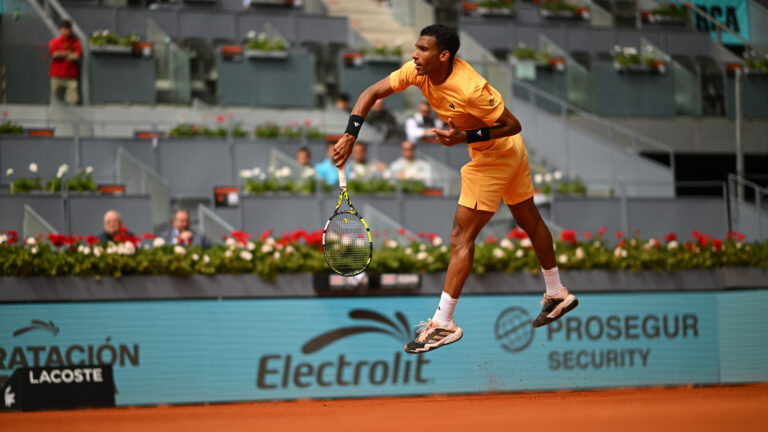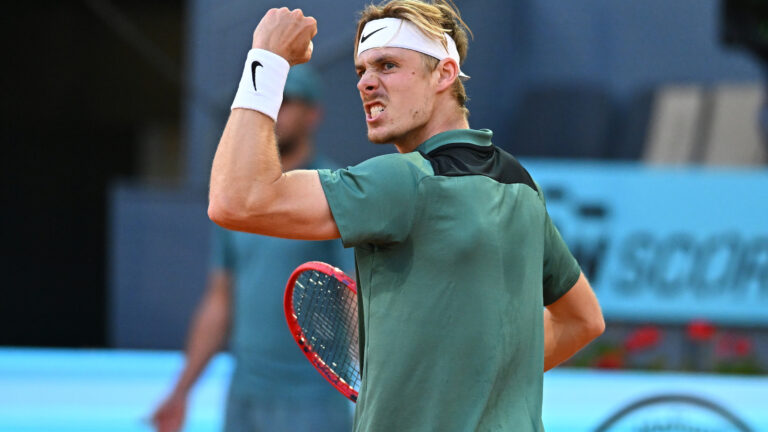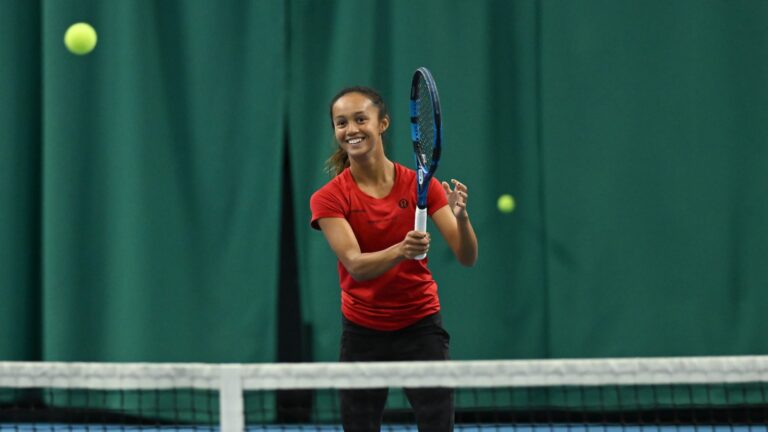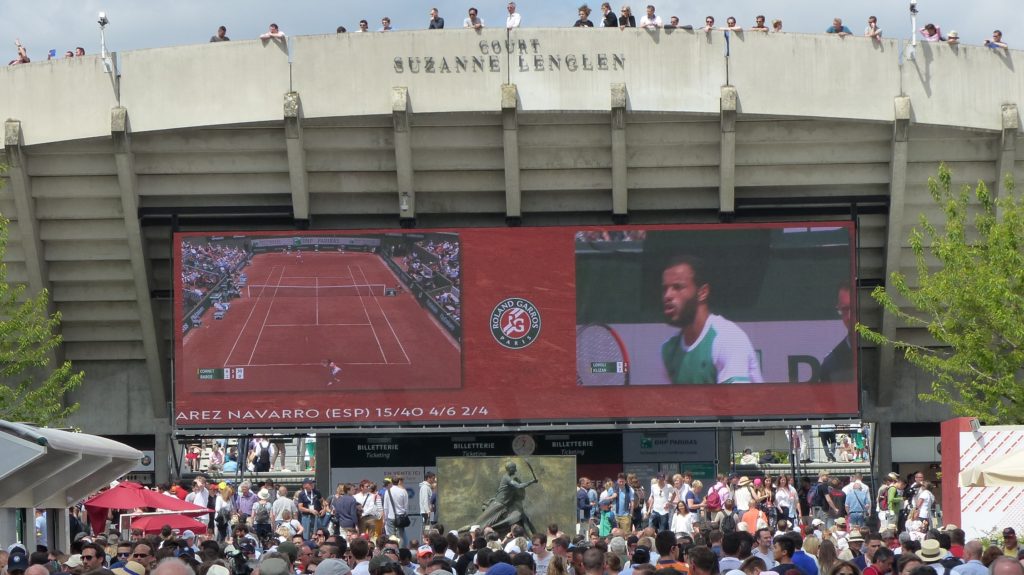
It’s a downer for hard-core fans of tennis and the organizers of this year’s Roland Garros that tennis’ best two players – Novak Djokovic and 13-time champion Rafael Nadal – were drawn in the same half, thus preventing a possible blockbuster match-up in the final.
Call it the luck of the draw or the fact that No. 2 seed Daniil Medvedev got the second spot ahead of No. 3 Nadal because he has 163 more ATP ranking points – 9,793 to 9,630 – but the potential Djokovic vs Nadal meeting, which would be their ninth at Roland Garros, is destined to be in the final four not the final.
The order in which the numbered tokens tumbled or the computer-generated names popped out into the draw is a major factor in how the 2021 edition will play out.
There are a couple of noticeable holes in the draw – more about those later – but if it’s a downer about Nadal and Djokovic it’s on the up and up for Canadians in the women’s and men’s fields. They cannot have too many complaints.
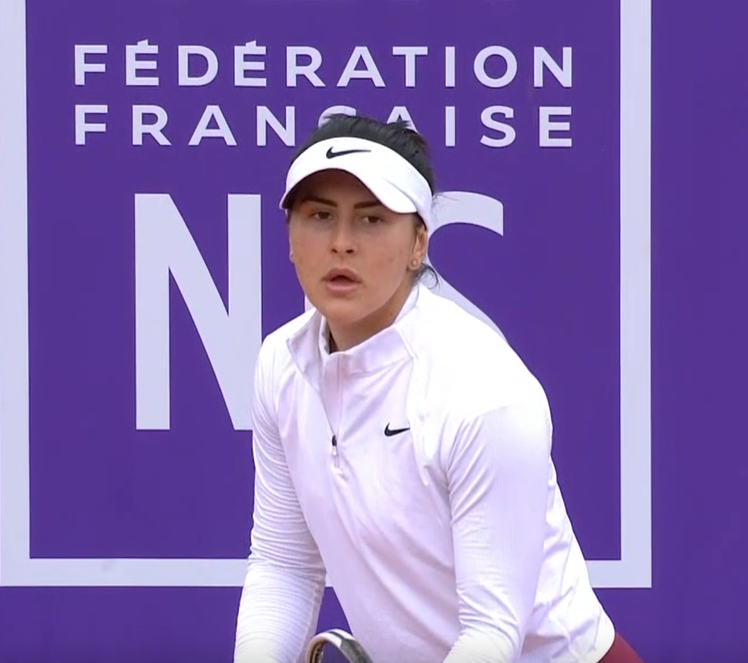
The No. 6 women’s seed Bianca Andreescu enters under a cloud after she withdrew from her quarter-final at this week’s WTA 250 event in Strasbourg with an abdominal issue, at least partly to be prudent ahead of the second Grand Slam of the year. Andreescu will start out with a first meeting with No. 85-ranked Tamara Zidansek. The 23-year-old Slovenian may be familiar to Canadians for upsetting Genie Bouchard in the opening round of Wimbledon in 2019. Zidansek reached the final of the Bogota clay-court event in April and is 10-4 on clay in 2021, but that includes four qualifying-round results.
In the second round Andreescu could play veteran American, No. 83-ranked Madison Brengle, or a qualifier.
Looking further ahead, the 20-year-old from Mississauga might face No. 29 seed Veronika Kudermetova of Russia or 19-year-old American Amanda Anisimova in the third round and then seeds No. 19 Johanna Konta or No. 10 Belinda Bencic in the round of 16. Even Andreescu’s potential quarter-final opponent, No. 2 seed Naomi Osaka, is not the greatest on clay, recording just one win – over fellow Japanese Misaki Doi – in three matches at lead-in tournaments in Madrid and Rome and openly admitting to uncertainty about how her game translates on clay courts.
The relatively favourable draw, it’s one of those holes or openings mentioned earlier, for Andreescu will depend on her fitness. She has shown in the past, and even this year (after missing all of 2020) with a semi-final of the Philip Island Trophy event in Australia (Marie Bouzkova) and the final at the Miami Open (Ashleigh Barty) – that she doesn’t require very much runway to reach a comfortable cruising altitude.
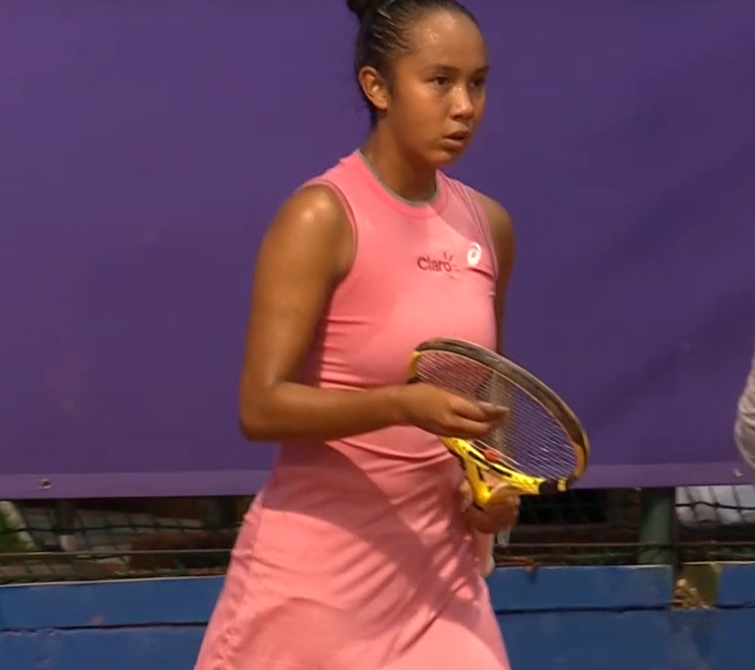
Playing in her second French Open, after winning the junior girls title in 2019, Leylah Fernandez will face No. 78-ranked Anastasia Potapova in the first round. The 20-year-old Russian failed to get out of the qualifying at her previous two clay-court events in Madrid and Rome but did have a win on clay over No. 39-ranked compatriot Anastasia Pavlyuchenkova in Charleston last month.
Fernandez defeated Potapova 6-3, 7-5 in their only previous meeting in Acapulco right before the pandemic struck last year.
Currently at a career-high ranking of No. 69 and playing in her fifth Grand Slam main draw, the 18-year-old from Montreal would face either No. 23 seed Madison Keys or No. 115-ranked French wild card Oceane Dodin in round two. Longer range potential opponents include No. 15 seed Victoria Azarenka and No. 3 Aryna Sabalenka.
Like Andreescu and Fernandez, the No. 17 men’s seed Milos Raonic and No. 20 seed Felix Auger-Aliassime cannot be too intimidated by their opening-round opponents.
Except for two matches in Rome last September, Raonic has not played a clay-court match in over three years – not since a third-round loss to Denis Shapovalov in Madrid in 2018 – and he is entered in the ATP 250 event on grass in Stuttgart the second week of the French Open. So there were questions about whether he would play his seventh Roland Garros (record 14-6).
In his opening match, the No. 18-ranked Raonic will play lefty Thiago Monteiro, the world No. 79. It’s a first meeting between the 30-year-old Canadian and the clay-court loving Brazilian who turns 27 on Monday.
If he advances, Raonic will be in more familiar territory against a pair of Americans – either No. 73 Frances Tiafoe or No. 86 Steve Johnson. His biggest obstacle would likely come in the form of No. 12 seed Pablo Carreno Busta in the third round. At the 2017 French Open in the round of 16, Raonic played what had to be one of his finest efforts on terre battue in a 4-6, 7-6(2), 6-7(6), 6-4, 8-6 loss to the dogged 29-year-old Spaniard.
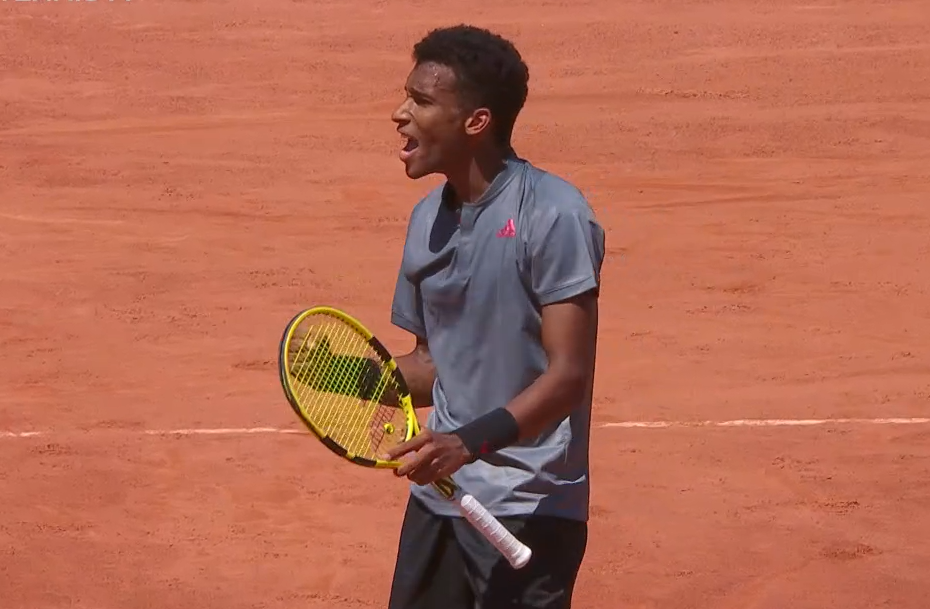
Auger-Aliassime is playing only his second Roland Garros – missing 2019 when he injured his abdomen in Lyon right before the event and then losing in the first round last year 7-5, 6-3, 6-3 to No. 52-ranked Yoshihito Nishioka.
His opponent this time for his hoped-for debut victory on the ochre courts of Paris will be veteran Andreas Seppi. The 37-year-old Italian is playing his 16th French Open (11-15) but had last played two hard-court Challenger events in Italy in March before losing this week in the first round at the ATP 250 in Parma, Italy, 6-3, 6-4 to No. 63-ranked Sebastian Korda of the U.S. It will be a first meeting between Seppi and Auger-Aliassime, with the Montrealer aiming for second-round match-up against either No. 90 Soonwoo Kwon of South Korea or No. 97 Kevin Anderson of South Africa.
Auger-Aliassime enters Les Internationaux de France with a modest 4-5 record on clay this spring. A potential third-round opponent for him could be the No. 9 seed, and one of his best friends on the tour, Matteo Berrettini of Italy.
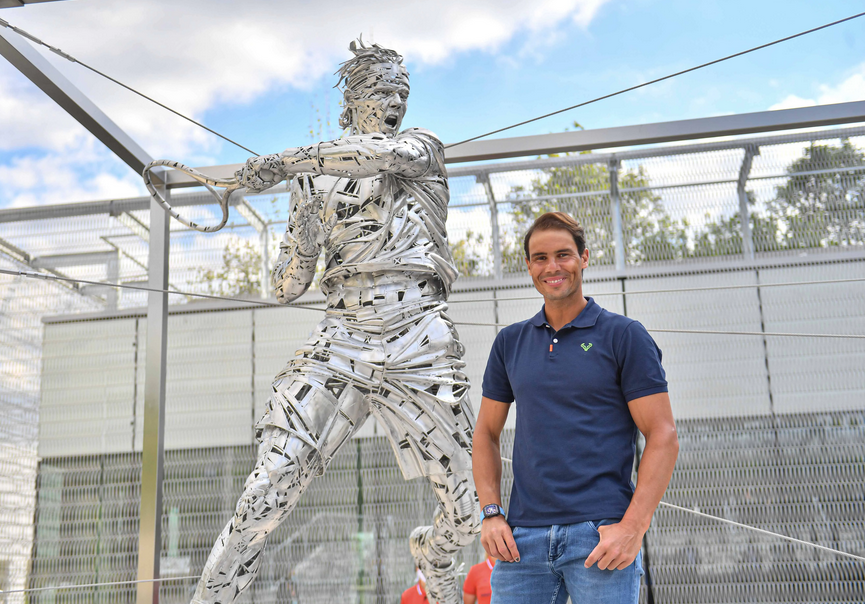
Before a quick overview of the broader tournament, doesn’t it feel like it’s premature to erect a statue at Roland Garros to 13-time champion Nadal before he retires? But then French do statues, stadiums, architecture, food, fashion etc. exceptionally well – so it’s hard to question whether it’s right for Rafa to be so soon frozen in motion in a pose for the ages.
In actual fact, Nadal may have the toughest draw of all the favourites – and he is incontestably No. 1 – with in-form Italians Lorenzo Sonego and Jannik Sinner as his possible third and fourth round opponents and then potentially Russian seeds (24) Aslan Karatsev or (7) Andrey Rublev to set up that much-talked about semi-final versus (1) Djokovic. Nadal will take on rangy Aussie No. 62 Alexei Popyrin the first round.
Roger Federer, in his 19th Roland Garros (champion in 2009), starts against a qualifier and then either Marin Cilic or French wild card Arthur Rinderknech in the second round. That might be a little less challenging than expected for the great Swiss, who has said he has no chance to win the title and has his main focus on the grass-court season beginning June 14 in Halle, Germany. With No. 30 Taylor Fritz being the only seeded player to prevent him from reaching the round of 16, Federer, who has only played two matches in a tournament (Doha in February) since February 1, 2020, could get more of a workout than he bargained for in the City of Light.
The most obvious hole in the draw is in the bottom quarter where the Medvedev resides in the No. 2 seeding position. Having voiced his distaste for clay, and apparently any interest in really adapting his game to the surface, he has a quirky encounter with Kazakh Alexander Bublik in the first round, and appears destined to advance no further than round three. That opens things up for No. 5 seed Stefanos Tsitsipas, the Monte Carlo champion and Barcelona runner-up, to make it to the semi-finals and a potential confrontation with either No. 6 seed Alexander Zverev or No. 4 Dominic Thiem, who has hit a patch of poor form at seemingly the worst time. But things could change for the 27-year-old Austrian who won the 2020 US Open and was runner-up at Roland Garros in 2018 and 2019.
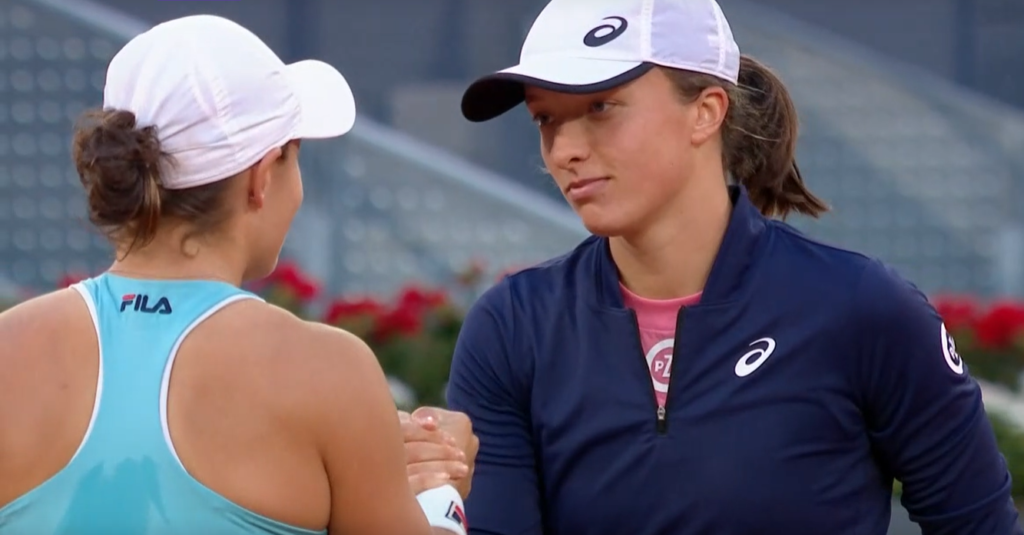
The most fascinating player in the women’s field, and maybe in the whole tournament, is defending champion Iga Swiatek. The Pole, 19, was invincible last October in Paris – not losing a set or more than four games in a set to win the title. There may be some speculation that she could turn out to be like surprise 2017 champion, 19-year-old Jelena Ostapenko, who lost in the first round the two years following her victory before finally winning two rounds in 2020. The Latvian is now ranked No. 44.
The year after her remarkable 2017 title, Ostapenko was 3-3 at events in Stuttgart, Madrid and Rome heading into Roland Garros, while this year Swiatek has been 8-1, with her only loss coming against the No. 1-ranked Barty in Madrid. Her 6-0, 6-0 demolition of No. 9 Karolina Pliskova in the Rome final indicates a return to the kind of tennis that made her so untouchable a year ago.
Swiatek starts out with No. 101 Kaja Juvan of Slovenia and, while names such as Muguruza, Kenin, Mertens, Pegula and Sakkari could threaten her advance to a possible semi-final against the top-seeded Barty, the potent Pole has something about her that suggests she will somehow survive.
Barty, champion the last time she played in 2019, is clearly a main contender for the title but others such as No. 7 seed Serena Williams, No. 11 Petra Kvitova, No. 15 Victoria Azarenka and No. 2 Osaka have done little to suggest they have championship credentials this year.
One player who has been convincing is Coco Gauff. She was impressive, especially in the first set of a 7-6(3), 6-3 semi-final loss to Swiatek in Rome and then in winning her second career title at the WTA 250 in Parma last week. The 17-year-old American seems to have ironed out some of the kinks in her game and looks a much more mature competitor.
That leaves two wild cards – the bulldozing tennis of No. 3 seed Sabalenka and the racquet wizardry of Andreescu. If either can get up a head of steam, the Coupe Suzanne Lenglen just might end up in Belarus or Canada.
